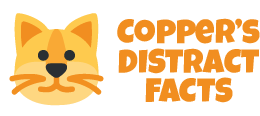What You Crowing About?
Crows sometimes use sentries, crows that are on guard to alert others about something dangerous. Researchers have found that crow communication is more complicated than simple danger alerts, though. Crows can recognize the calls of others in their own family group. They also can make assorted clicks and rattles, besides the familiar cawing sound. In addition to the sounds they make, the number and length of their calls may also be part of crow communication.
Crows have also shown the ability to remember faces, use tools, and even play tricks on each other. Crows are super intelligent! Even the grumpy ones, like Brock.

When you look, you see. And they see you.
Crows are known for making a racket, so you might hear sentries “cawing” before you see them. Your best bet to see sentries in action will be to look for a few crows congregating together over a meal. This isn’t as complicated as it might sound, because crows are “opportunistic” feeders which means they’ll eat just about anything. They often feed on the ground, so if you see a few on the ground helping themselves to some roadkill or perhaps some scraps of food that they found near a trash can, look up to any nearby trees and you just might spot a sentry.
We were once at the beach and we knew to keep our food covered up because the gulls like to sweep in and grab things like chips, crackers, bread, etc. if you leave them out in the open. We were completely caught off guard though when a crow landed on our bag and snatched out a granola bar from one of the pockets. The granola bar was down in the pocket and sealed up in its package, but the crow had obviously seen plenty of bags like that before and had figured there must be some goodies in there. We watched as the crow flew over and met another, then stepped on the granola bar while they tore open the wrapper and dined together on the beach. Well-played my crow friends. Well-played.

Crows are always learning about us, so here are some ways to learn more about them.
I’ve shared a few resources below that I think you’ll enjoy as you dive deeper into the fascinating world of crows!
Kids, remember to ask a parent, teacher, or librarian for help whenever you are looking for books or using the Internet. I always try to make sure to share kid-friendly books and resources, but websites are changing all the time, so always check with an adult first.
- Listen to this Creature Feature podcast from the United States Fish and Wildlife Service to learn more about crows using sentinels to keep others secure while they eat. You’ll also hear some of their other slick techniques crows use, including working as a team to steal fish from an otter! https://www.fws.gov/southeast/podcasts/2009/05/clever-crows/
- It’s amazing that crows can remember faces! This audio clip and video from NPR describe how we know crows know us. https://www.npr.org/sections/krulwich/2009/07/27/106826971/the-crow-paradox
- According to Backyard Birds (Peterson Field Guides for Young Naturalists) by Karen Stray Nolting and Jonathan Latimer, crows have been known to be able to count to 3 or 4, and have learned to break open clams by dropping them on rocks from high in the sky. The Backyard Birds guide is a great bird guide to start out with as you learn to identify the birds you see all around you, what they eat, and where they like to nest. Check with your library for the book or ask an adult if they’d like to pick up a copy and learn about birds along with you! I’ve included a link to help them find the book at a local bookstore: https://www.bookstorelink.com/9780395922767
- The NPR video I linked to above about crows recognizing faces mentions experiments conducted by Professor John Marzluff at the University of Washington. Marzluff has studied crow intelligence extensively, and he shares even more cool stuff about crow smarts in a TEDx talk which you can watch in this video: https://tedxseattle.com/talks/crows-smarter-than-you-think-john-marzluff-at-tedxrainier/
